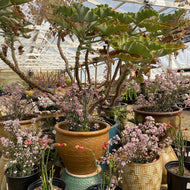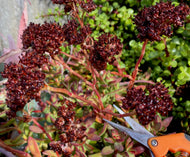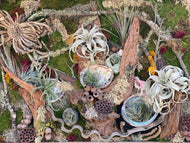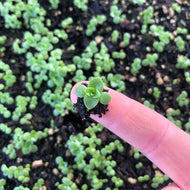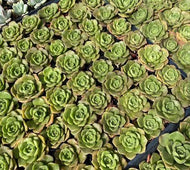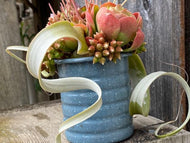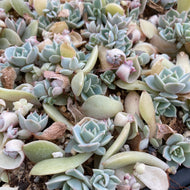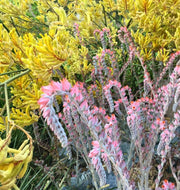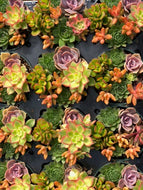Almost all Cactus are a succulent, meaning they have thickened stems, leaves, or roots that store water and aid the plant in times of drought. Not all succulents are cactus.

Most Cactus are evolved to survive periods of drought, though they do not all hail from the desert environments we commonly associate them with. For cacti adapted to drought, the three main centers are Mexico and the southwestern United States; the southwestern Andes, where they are found in Peru, Bolivia, Chile and


Taking Care of Cacti
Handling
A towel wrapped around spiny part to form a handle can help save your hands and the beautiful spines as well.
Soil
Good drainage and aeration are key. You can create your own mix by combining 1 part perlite, pumice, or lava rock with 4 parts potting mix.
Topdressing
Your cactus arrangement looks even better with the top of the soil covered a layer of decorative pebbles or gravel on top. This also helps keep the base of the plant clean and dry.
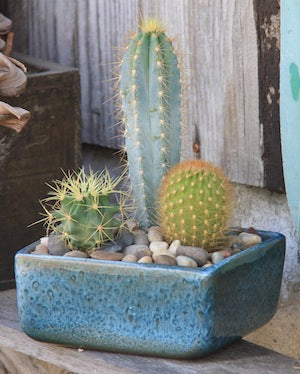
Water
Water when the soil around the plant is dry. When watering, water thoroughly, so the water saturates evenly throughout the soil. Cactus in the shade will need to be watered less often. Many plants look unsightly with water spots, so it is best to water only the soil as much as possible.
Fertilizer
Fertilize with a half-strength balanced liquid fertilizer twice per year or topdress with a slow-release fertilizer or organic fertilizer once or twice per year in the growing season; avoid feeding too late in the fall, and let up completely in the winter. There are specialized cactus fertilizers that deliver extra Calcium and other micronutrients some varieties need. Check in at your local nursery for recommendations!
Light
The perfect site for your cactus plant depends on the plant. Some cactus can tolerate full inland sun, while others would need some afternoon shade. Read the requirements of your plant when choosing where to grow it.
Pest and Disease Control
Cactus can be bothered by insects, just as other plants are. If you have an insect infestation, take some pictures and bag a piece of the plant and consult your local cooperative extension agency for help. Ensuring proper watering and lighting will help your cactus avoid root rot and other common problems.
Maintenance
Deadhead plants after flowering by pulling off dried flowers. Always make sure to use clean, sharp tools to help your collection stay healthy and the cuts heal more rapidly!
Various Cactaceae 1-Nopalea coccinellifera 2-Cephalocereus senilis 3-Cereus giganteus 4-Mammillaria longimamma 5-Rhipsalis paradoxa 6-Echinocactus longihamatus 7-Echinopsis oxygona 8-Cereus grandiflorus 9-Echinocereus pectinatus 10-Leuchtenbergia principis 11-Phyllocactus ackermanni 12-Melocactus communis

